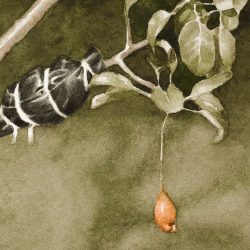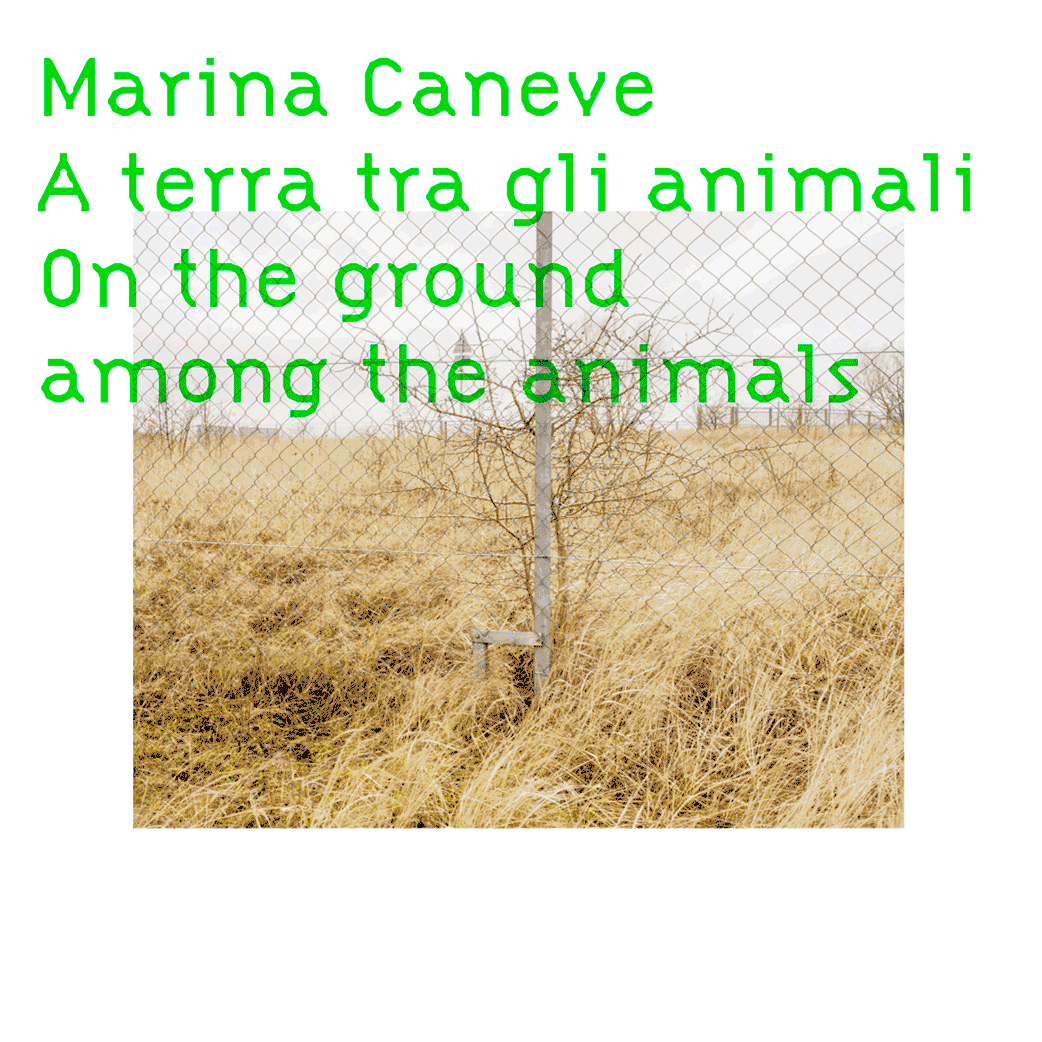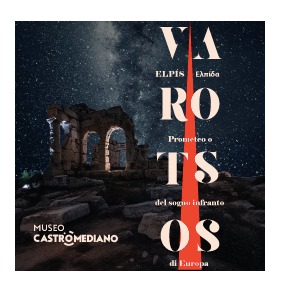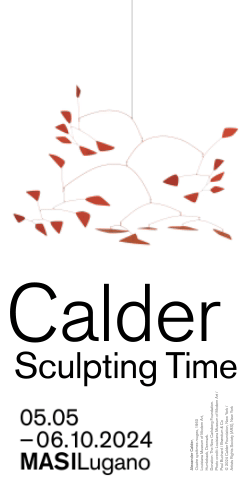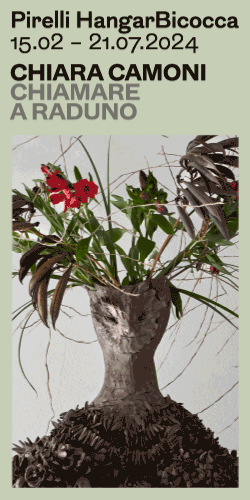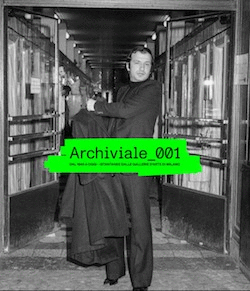(Scroll down for the English text)
ATPdiary vi presenta gli artisti del progetto curato da Rita Selvaggio ‘The Remains of the day’. Promosso da Casa Masaccio ‘The Remains of the day’ si ‘consumerà’ nella giornata del 21 giugno a San Giovanni Valdarno in provincia di Arezzo. In diverse tappe la curatrice ci presenta gli interventi dei seguenti artisti: ?Alessandro Agudio, Marco Basta, Lupo Borgonovo, Cleo Fariselli, Dario Guccio, Invernomuto, Helena Hladilova, Andrea Kvas, Alice Mandelli, Beatrice Marchi, Anna Mostosi, Gianni Politi, Lisa Rampilli, Giangiacomo Rossetti, Manuel Scano, Namsal Siedlecki, Davide Stucchi, Serena Vestrucci
Inaugurazione sabato 21 Giugno 2014 h. 18.30
Interventi di Helena Hladilová & Namsal Siedlecki, Andrea Kvas e Invernomuto
Testi di Rita Selvaggio

Helena Hladilová & Namsal Siedlecki MEMORIA DI FUOCO (SIMPOSIO) / Giardino di Casa Masaccio ore 18.30
Nel 1552, il notaio Pietro di Sebastiano di Piero Renzi acquistò casa Masaccio dalla famiglia Guidi. Lo stemma della dinastia Renzi è tuttora visibile sull’arco del portone al numero 48 di Via Giovanni da San Giovanni, lato su cui si apre la vista del giardino. Liane di grappoli lilla si arrampicano sul pozzo, blauregen, “pioggia blu”: è così che i tedeschi chiamano il glicine. Si vede una magnolia, di quelle derivate dall’incrocio della liliflora con la denudata, il ginepro e l’agrifoglio, le camelie, l’ortensia, con la quale la pazienza giapponese produce una bevanda, l’Ama-tsia, detta anche “tè celeste”, un tempo usato per lavare le statue di Buddha, e un olivo. Omero racconta che fosse proprio di olivo, il gigantesco tronco con cui Ulisse accecò Polifemo e, sempre di olivo, il legno con cui fece il letto nuziale per sé e Penelope. E ancora, una macchia disordinata di ginestre, le cui ceneri si credeva un tempo contenessero oro, e un immancabile gelsomino, di cui il primo ad averne alcuni esemplari nel suo giardino fu proprio Cosimo I de’ Medici. Si narra che il granduca si innamorò talmente tanto di questo candido fiore profumato da volerne essere il possessore esclusivo vietando ai suoi giardinieri di portar via persino i ramoscelli recisi.
Il mito e la scrittura collocano l’origine dell’umanità in un giardino e l’idea di giardino è sempre stata quella di un luogo felice e ameno, posto ai margini della realtà e ai confini del mondo, abitato dagli dei e dai beati. E’ un topos classico della cultura greca, ne fa parte il mito, lo rappresentano il divino e soprattutto l’utopia. Kepos, grembo, è questo il temine vero con cui i Greci concettualizzavano il giardino, una parola in cui convergono sia la fecondità che il recinto.
Tra queste memorie e la cenere perduta di ciò che non appartiene più al qui, si leva una traccia sonora composta dalle registrazioni del lavoro di uno scultore affaccendato con vari utensili: scalpello, martello, mazzuolo, subbia e unghietta, calcagnolo, gradina e scalpello, motosega e levigatrice. A queste poi si sovrappone l’effetto acustico di alcuni animali e di fenomeni atmosferici che modificano in vari modi il legno. Il suono prodotto da un picchio ad esempio, che è quasi elettronico e produce sino a diciannove battiti al secondo, quello generato dai tarli che rosicchiando il legno producono un brusio molto acuto, da un castoro mentre rode la corteccia di un albero e poi fulmini, tanto creato e soprattutto molto vento. Una partitura a più voci, un simposio e un laboratorio immaginario che si materializza in un audio in cui, oltre ai vari “scultori”, la natura tutta collabora come in una sinfonia alla realizzazione di un’impalpabile scultura .
Nel giardino della casa di Masaccio, di colui che aveva dotato il dogma di un corpo reale e concreto, posato solidamente sulla terra e capace di produrre ombra, la scultura si è svincolata dalle leggi di gravità, indugia e poi si perde come un fuoco. Proprio come la cenere che è destinata alla dispersione, si è librata nell’aria e dall’aria non ha più fatto ritorno.

Andrea Kvas PICCHIO VERDE / Casa Giovanni da San Giovanni ore 18.30
Al 105 di Corso Italia troviamo la casa natale di Giovanni Mannozzi. Occupa uno dei moduli della lottizzazione medioevale di San Giovanni progettata da Arnolfo di Cambio e mantiene le caratteristiche architettoniche della casa ballatoio, come l’impianto originario e la scala di pietra che collega il piano terra al primo piano. L’ingresso conserva un’estesa porzione di parate in terra cruda (pisé) e le due sale al primo piano presentano soffitti a cassettoni con finiture di pregio.
Figlio del notaio Giovan Battista di Agnolo che lo avviò alla carriera notarile e poi a quella ecclesiastica, il Mannozzi nasce a San Giovanni Valdarno nel 1592. Abbandonati presto gli studi si trasferisce a Firenze dove fa ingresso a bottega del pittore Matteo Rosselli già verso il 1608. Il Baldinucci ne documenta anche un alunnato presso Giulio Parigi, scenografo prospettico e disegnatore, e ne descrive la vita selvatica e stravagante, la sua smodatissima applicazione allo studio del disegno, il suo vestire trasandato come se –“i panni gli fossero stati gettati addosso dalla finestra”-, i detti arguti e l’umorismo grassoccio. Quando nel 1621, Maria Maddalena de’ Medici entrò in ritiro nel monastero domenicano della Crocetta, Giovanni Mannozzi, in arte Giovanni da San Giovanni, si propose per la decorazione della cappellina collocata nel giardino dove vi dipinse una veramente bizzarra Fuga in Egitto in cui Maria è raffigurata nell’atto di scendere dall’asino presso un’osteria.
In questo interno dove interminabilmente sono trascorsi gesti, abitudini, ore e giorni, Andrea Kvas recupera, attraverso la sostanza dell’artificiale, il naufragio di forme rimaste orfane e sempre pronte a fare ritorno allo sfondo da cui emergono. Con un senso della materia spesso e radicato, assorbente e saturo, con una profondità che non conosce orizzonte, la pittura aggiunge spazio allo spazio, volume a volume, unità a unità. Tela, pennelli, colle, smalti e colore, costituiscono un alfabeto che genera altri lemmi e nuove sintassi, uno spazio di contatto tattile e manuale oltre che visivo. Persino lo stesso titolo, scelto d’istinto e a priori, fa parte di questo abicì, è strumento e al contempo materia liberata da ogni vincolo associativo e da ogni risonanza metafisica.
E ancora, ritagli inquieti o un convito di seggiole su cui inguaribili macchiature di pennellate si stampano indistintamente su fondi magri. Un elemento prelevato al quotidiano che non si eleva allo statuto di “opera”, ma che viene lasciato al suo intangibile vero, -“portare nel reale quello che si tende ad idealizzare, perché in fondo sono sempre e comunque sedie”-, sottolinea Kvas.
La pittura che agisce su ciò che la circonda e ne trae vibrazioni, decomposizioni, proiezioni e trasformazioni, si può concentrare su un momento molto breve, come dagli estremi verso un centro, o può al contrario svilupparsi per aggiunte che vanno da un centro agli estremi, ma può anche percorrere queste vie nei due sensi.
È, quello del Picchio Verde, un paziente dimorare nella vacuità della rappresentazione, dove l’indicibile è qualcosa che ha un nome e dove l’immagine vuota non è più immagine di nulla ma è perfettamente colma della propria sostanza fisica e materiale.

Invernomuto, Wishes of a G (2014), The Celestial Path (2013) / Stazione Ceramica Ex-Ceramica via Mannozzi ore 18.30
Nel Valdarno, la tradizione della ceramica è molto antica. Li tre libri dell’arte del vasaio, dati alle stampe nel 1548, citavano già la qualità dell’eccellente rena bianca della zona. Pubblicati dal quel tale Cipriano Piccolpasso, la cui reale identità è tuttora ignota ai più, sono in realtà un trattatello pieno di simboli e allusioni ermetiche. Architetto, storico, ceramista, pittore di maioliche, in verità, il Piccolpasso era anche molto di più. Il suo dissertare ci fornisce altresì, per fare un esempio, ricette per una particolare qualità di cinabro, ottenuto con un composto di mercurio e zolfo amalgamati con aceto rosso, uno dei liquidi più adoperati in alchimia. “ Ora mi bisogna trattare di un’altra pratica e convienni compire il bianco del duca di Ferara, di puoi si ragionerà di tutti gli altri colori. È da sapere che, per fare il detto bianco, la rena da San Giovanni è la miglior…”scriveva il Cavaliere, come si faceva chiamare l’autore. Con tale rena, Vincenzo Mannozzi e Giuseppe Francini condussero i primi esperimenti per la fabbricazione delle terraglie all’uso inglese che all’inizio furono fallimentari ma, nel 1866, permisero una vera lavorazione industriale di stoviglie da tavola e ceramiche artistiche. Nei primi anni la fabbrica sfamava una trentina di persone. Nonostante le alterne vicende, la produzione si arricchì con l’imitazione di maioliche artistiche del quindicesimo secolo all’urbinate e con la costruzione di mattoni refrattari. La tanto incensata rena era così destinata alla dissipazione senza possibilità di riconoscimento.
La ceramica, una delle arti del fuoco. In questo opificio che ha visto tanta passione per il segreto, ceneri, polveri, ciprie e l’inconsistenza di corpi plurali, The Celestial Path (2013) cerca di sondare ciò che si cela nelle retrovie della “realtà nascosta” creando un ponte tra un passato arcaico e il presente delle più recenti scoperte scientifiche. Un video monocanale che segue un doppio tracciato di ricerca. Da un lato Emma Kunz (1892-1963) – ricercatrice, naturopata, guaritrice, artista- scopritrice nel 1942 dell’AION A, una pietra curativa applicata per la particolare efficacia in ogni possibile processo infiammatorio; dall’altro la teoria del multiverso, uno dei concetti più radicali emersi nella fisica degli ultimi anni. Tour virtuali all’interno delle cave romane nei pressi di Würenlos, nella valle della Limmat in Svizzera, da dove viene estratta la roccia che pulita, raffinata e ridotta in finissima polvere, viene destinata a scopi terapeutici, si combinano alla voce narrante di Brian Greene, uno dei principali studiosi dell’idea di universi coesistenti e alternativi al nostro spazio tempo.
Wishes of a G (2014) è un ritratto ossessivo della Wishing Well nella Chinatown losangelina. Il monumento si intitola “Seven Star Cavern” , in riferimento alle montagne di Seven Star in Cina, dove secondo la tradizione locale, vanno a rifugiarsi gli immortali. E’ un personale tributo a Mike Kelley – scomparso nel 2012- che considerava la “Fontana dei desideri” l’unica opera d’arte pubblica di un certo rilievo a Los Angeles, tant’è che nel 1999 gli dedica una scultura. Girato con una camera analogica Hi8, il video offre un’analisi affettiva di una porzione della città, mentre il sonoro è una linea di sintetizzatore, effettuata con un pre-set specifico definito west coast whistle, o g-funk synth, funky worm, gangsta whine, gangsta lead, suono che caratterizzò i brani hip-hop prodotti nella west coast durante la fine degli anni ’80 e per tutti gli anni ’90.
Un memoriale etereo, prestato da infiniti altri e da infiniti oblii, sciolto nella grana delle immagini in movimento.

ENGLISH TEXT
Text by Rita Selvaggio
Opening 21 June 2014, 6:30 pm
Helena Hladilová & Namsal Siedlecki MEMORIA DI FUOCO (SIMPOSIO) / Giardino di Casa Masaccio
In 1552, the notary Pietro di Sebastiano di Piero Renzi bought Masaccio’s house from the Guidi family. The coat of arms of the Renzi dynasty is still visible on the arch of the street door at number 48, Via Giovanni da San Giovanni, the side onto which the view of the garden opens. Lianas of lilac clusters climb onto the well, Blauregen, ‘blue rain’: that’s what the Germans call wisteria. We can see a magnolia, the variety derived from the crossing of the liliflora with the denudata, juniper and holly, camellias, hydrangea, out of which Japanese patience is able to produce a beverage, called ama-cha or the ‘tea of heaven’, that was once used to wash statues of the Buddha, and an olive. Homer tells us that the gigantic trunk with which Ulysses blinded Polyphemus was that of an olive tree, and that the wood from which he made the nuptial bed for himself and Penelope was olive too. And again, an untidy patch of broom, whose ashes were once believed to contain gold, and the inevitable jasmine, of which the first person to have some specimens in his garden was in fact Cosimo I de’ Medici. It is said that the grand duke was so fond of this scented white flower that he did not want anyone else to possess one, forbidding his gardeners to take away even cuttings of the plant.
Myth and scripture place the origin of humanity in a garden and the idea of garden has always been that of a happy and pleasant place, located on the margins of reality and at the confines of the world, inhabited by the gods and the blessed. It is a classic topos of Greek culture, part of mythology, representing the divine and above all utopia. Kepos, womb, this was the term the Greeks used to conceptualise the garden, a word in which the ideas of fertility and enclosure converge.
Between these memories and the lost ashes of what no longer belongs here rises a sound track composed of recordings of the work of a sculptor busy with various tools: stone-cutter’s chisel, stonemason’s hammer, cold, claw and dog’s-tooth chisel, chainsaw and sander. Over these are laid the noises made by a number of animals and by atmospheric phenomena that modify wood in various ways. The sound produced by a woodpecker for example, which is almost electronic and can have as many as nineteen beats a second, the one generated by woodworm, which make a very high-pitched buzz as they chew the wood, that of a beaver while it gnaws the bark of a tree, and then bolts of lightning and above all a lot of wind. A part song, a symposium and an imaginary workshop that are materialized in an audio track in which, in addition to various ‘sculptors’, the whole of nature collaborates in the creation of an impalpable sculpture, as if in a symphony.
In the garden of the house that belonged to Masaccio, to the artist who discovered how to create the illusion of a real and concrete body, standing solidly on the ground and able to cast a shadow, the sculpture has freed itself from the laws of gravity, hesitates and then goes out like a fire. Just like the ash that is destined for dispersion, it has risen into the air and from the air has never returned.
///
Andrea Kvas PICCHIO VERDE / Casa Giovanni da San Giovanni
At no. 105, Corso Italia, we find the house in which Giovanni Mannozzi was born. It occupies one of the lots in Arnolfo di Cambio’s parcelling out of mediaeval San Giovanni and still has the architectural characteristics of the balcony house, as well as the original layout and the stone staircase linking the ground floor to the first floor. The entrance preserves a large portion of wall made of rammed earth (pisé) and the two rooms on the first floor have coffered ceilings with fine finishings.
Son of the notary Giovan Battista di Agnolo, who started him on a career first as a notary and then in the Church, Mannozzi was born in San Giovanni Valdarno in 1592. He soon gave up his studies and moved to Florence, where he entered the studio of the painter Matteo Rosselli around 1608. Baldinucci also records an apprenticeship with the set designer, perspective painter and draftsman Giulio Parigi, and describes his wild and eccentric life, his unreserved application to the study of drawing, his shabby attire, as if ‘the clothes had been thrown onto him from the window’, his witty remarks and his hearty sense of humour. When Maria Maddalena de’ Medici entered the Dominican convent of the Little Cross in 1621, Giovanni Mannozzi, known as Giovanni da San Giovanni, offered to decorate the small chapel in the garden, where he painted a truly bizarre Flight into Egypt in which Mary is depicted in the act of dismounting from her donkey at an inn.
In this interior where actions, habits, hours and days passed interminably, Andrea Kvas has salvaged, through the essence of the artificial, the wreck of forms left orphan and always ready to sink back into the ground from which they have emerged. With a dense and rooted, absorbent and saturated feeling for material, with a depth that knows no horizon, the painting adds space to the space, volume to volume, unity to unity. Canvas, brushes, glue, enamels and colour constitute an alphabet that generates other words and new syntax, a space of tactile and manual as well as visual contact. Even the title, chosen instinctively and a priori, is part of this ABC. It is an instrument and at the same time material liberated from any associative constraint and any metaphysical echo.
And again, restless scraps or a banquet of chairs on which the incorrigible marks of brushstrokes are stamped indistinctly on scanty backgrounds. An element drawn from daily life that is not elevated to the status of ‘work’, but that is left in its intangible truth, ‘bringing into reality what one tends to idealize, because at bottom they are still just chairs, ’ stresses Kvas.
Painting that acts on what surrounds it and takes from it vibrations, decompositions, projections and transformations can be concentrated on a very brief moment, as in the movement from extremes towards a centre, or it can on the contrary grow by additions that go from a centre to the extremes, but it can also follow these paths in both directions.
What the Picchio Verde [Green Woodpecker] does is to dwell patiently in the vacuity of the representation, where the inexpressible is something that has a name and where the empty image is no longer an image of nothing but is perfectly full of its own physical and material substance.
///
Invernomuto, Wishes of a G (2014), The Celestial Path (2013) / Stazione Ceramica Ex-Ceramica via Mannozzi
The tradition of ceramics in the Valdarno is an ancient one. The excellent quality of the white sand in the area was already mentioned in Li tre libri dell’arte del vasaio, or ‘The Three Books of the Potter’s Art’, printed in 1548. Published by a certain Cipriano Piccolpasso, whose true identity is still unknown to most people, the books in reality make up a short treatise filled with hermetic symbols and allusions. An architect, historian, ceramicist and painter of majolica ware, Piccolpasso was in truth much more. In his writings we also find, for example, recipes for a particular shade of vermilion, obtained from a compound of mercury and sulphur mixed with red-wine vinegar, one of the liquids most widely used in alchemy. ‘Now I need to discuss another worthwhile practice and that is the making of the duke of Ferrara’s white, after which we will speak of all the other colours. It should be known that, to make the aforesaid white, the sand from San Giovanni is the best…’ wrote the Cavaliere, as the author chose to call himself. With this sand, Vincenzo Mannozzi and Giuseppe Francini carried out the first experiments in the manufacture of English-style earthenware. Initially a failure, these led, in 1866, to a truly industrial production of tableware and artistic ceramics. In its early years the pottery supported around thirty people. Despite a series of ups and downs, its production was expanded to include imitations of the 16th-century artistic majolica of Urbino and the manufacture of refractory bricks. Thus the much-praised sand was doomed to dissipation without any possibility of recognition.
Ceramics, one of the arts of fire. In this pottery that has seen so much passion for the secret, along with ashes, powders and the insubstantially of multiple materials.The Celestial Path (2013) seeks to probe what is concealed behind the lines of this ‘hidden reality’, building a bridge between an archaic past and the most recent scientific discoveries of the present. A single-channel video that follows a dual track of research. On the one hand Emma Kunz (1892-1963) – seeker, naturopath, healer, artist and discoverer in 1942 of the AION A, a rock with healing powers particularly effective in any possible inflammatory process; on the other the theory of the multiverse, one of the most radical concepts to have emerged from the physics of recent years. Virtual tours of the Roman quarries near Würenlos, in the valley of the river Limmat in Switzerland, from where the stone is extracted and, once cleaned, refined and ground to a very fine powder, used for therapeutic purposes, are combined with the narration of Brian Greene, one of the greatest experts on the idea of universes that coexist with and are alternative to our space-time.
Wishes of a G (2014) is an obsessive portrait of the Wishing Well in Chinatown, Los Angeles. The monument is called ‘Seven Star Cavern’, in reference to the Seven Star Mountains in China, where according to local tradition the immortals take refuge. It is a personal tribute to Mike Kelley, the artist who died in 2012 and who considered the ‘Wishing Well’ to be the only work of public art of any significance in Los Angeles, dedicating a sculpture to it in 1999. Shot with a Hi8 analogue camcorder, the video offers an emotional analysis of a portion of the city, while the sound track is a line played on the synthesizer, made using a specific pre-set called West Coast Whistle, or with the ones called G-funk Synth, Funky Worm, Gangsta Whine, or Gangsta Lead, sounds that characterized the hip-hop produced on the West Coast at the end of the eighties and throughout the nineties.
An ethereal memorial, borrowed from infinite others and infinite forgettings, dissolved in the grain of the moving pictures.
English translation: Huw Evans
